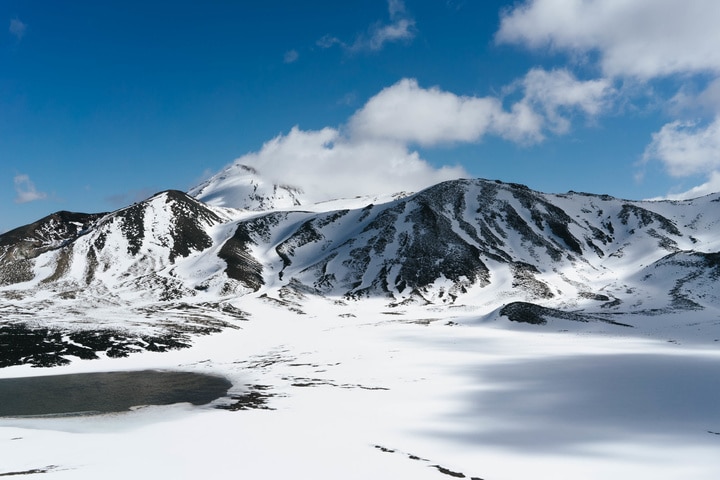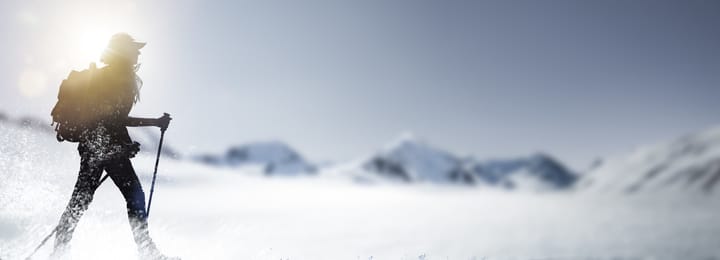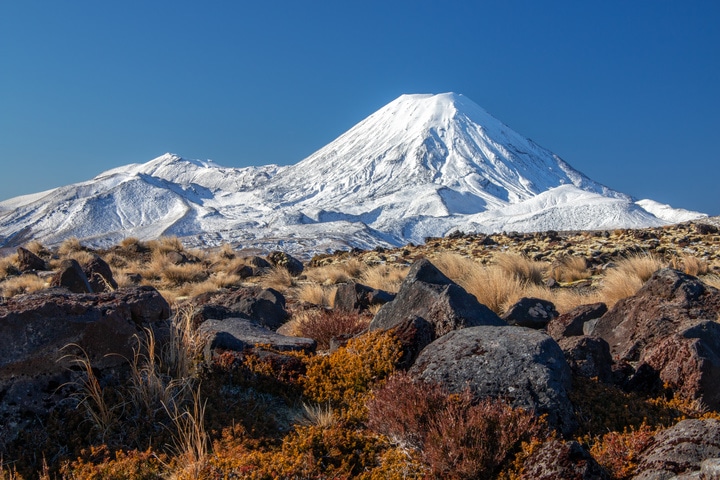
As snow continues to blanket Tongariro National Park, keen trekkers are making the most of the weather conditions by taking guided treks over the Tongariro Crossing in winter.
If you’ve walking the Tongariro Alpine Crossing before, chances are you’ve done this in the summer season when it’s safe to trek unguided. However, tackling the Tongariro Crossing in winter comes with a different set of risks and challenges which is why it can only be done in the company of an experienced guide.
It’s not hard to see why walking the Tongariro Crossing in winter requires more preparation. From slippery ice to limited daylight hours, it’s not something visitors can just do on a whim.
While your guide is there to ensure your safety and enjoyment, there is still a fair amount of personal responsibility that comes with trekking the Tongariro Crossing in winter.
It’s a good idea to develop that know-before-you-go attitude if you’re thinking of doing the Tongariro Crossing anytime soon. Here’s some of our key advice.
Winter treks are nothing like summer treks
It’s a common misconception that if you’ve walked through the Tongariro Crossing in the summertime, you’re fully equipped to walk it between May and October. Sure, you may know the way but the experience will be extremely different. The tracks will be covered in ice and snow, you’ll need a greater level of fitness and you’ll need to carry a lot more equipment.
All in all, winter treks are nothing like summer treks.
It’s great to be confident but conditions on the mountain can change quickly, forcing you to think on your feet to get out of sticky situations.
Listen to your guide, they have the skills and experience to get you through the trek safely, ensuring nothing gets in the way of a good time.
Prepare for all scenarios
Companies offering guided treks on the Tongariro Crossing in winter take your safety very seriously. They will have specific instructions on how to prepare you the best you can. This will include everything from what equipment to bring to what clothing to wear.
You must adhere to all instructions.
Guides know what the conditions must be like in order to take a group over the Tongariro Crossing. But even with this knowledge, you can never be sure that the weather won’t turn quickly.
Some guide companies provide certain pieces of clothing, footwear and equipment, others leave it up to you. Whoever you go with, your guide will check that you are 100% prepared with the equipment they have advised.
Here’s a list of equipment to give you an idea of how to prepare:
- Hiking boots that come above the ankle
- Crampons
- Trekking poles and ice axe
- Warm waterproof jacket
- Thermal base layers and fleece layers
- Fleece pants
- Warm waterproof pants
- Helmet
- Sunglasses
- Beanie, waterproof ski gloves, scarf
But wait, there’s more. In your backpack, you’ll need:
- Extra dry clothing including thermal base layers
- 2 litres of water
- Camera
- Sunscreen and lip balm
- Packed lunch and snacks
- First aid kit
- Cell phone
You don’t need to be an experienced trekker to do the Tongariro Crossing in winter but you do need to have a good level of fitness. This is not only because it’s a long walk through alpine tracks, but also because you’ll be carrying a lot of gear and wearing heavy clothing.
Have some understanding of alpine terrain
The Tongariro Alpine Crossing is one of New Zealand’s most iconic walks and because thousands pass through the tracks each year, many neglects to understand that they may encounter harsh mountain conditions.
We recommend you learn about the environment regardless of the season. However, winter treks are known for the risks associated with the snow and ice on the tracks.
Climbing to an altitude of 1886 metres is no easy feat. Add snow, ice and sub-zero temperatures into the mix and you’ve got an even bigger challenge.
You’ll find plenty of images online that will show you what the tracks look like and how thick the snow may be at the time of year you’re going. Make sure you also have a look at a map of the full trek to understand the distance you’ll cover.
Prepare for an early start. With fewer daylight hours and wintry conditions, your trek will begin at daybreak to ensure you’re back to base before dusk. You’ll be walking through 19.4 km which is expected to take around eight hours, with several breaks along the way.
Tongariro Crossing in winter is a trek you won’t forget
The Tongariro Alpine Crossing is an amazing adventure and one you’ll never forget. In the company of a specialised guide, you’ll have a winter trekking experience like no other.
We love to hear the wonderful stories from our guests who have crossed the Tongariro Crossing in winter and we look forward to many more as the guided season continues right through to October.
Take advantage of the many companies offering guided treks, all within a short distance from The Park Hotel. Call us today to book your accommodation and begin your winter experience on the Tongariro Alpine Crossing.


